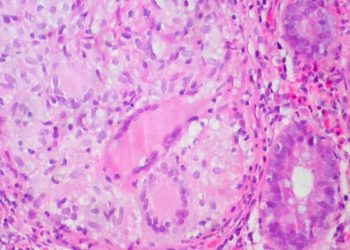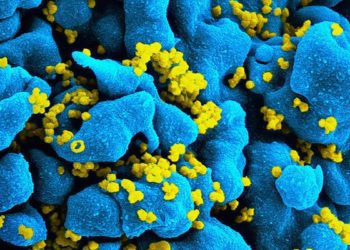College campus mpox outbreaks can be controlled with timely detection and isolation
1. This stochastic dynamic model demonstrated that mpox outbreaks in the United States can be controlled on college campuses with timely detection and isolation of symptomatic cases.
2. In this simulation model, detection and isolation practices led to a significant decrease in the average number of infections.
Evidence Rating Level: 1 (Excellent)
Study Rundown: The first American cases of mpox were detected in May 2022, with continuous monitoring as the risk of possible outbreak persists. College campuses represent a large conglomeration of individuals in close proximity, with many students living in dormitories. There is further concern that an uncontained outbreak could result in the temporary closing of campuses, impacting education. However, there is a gap in knowledge as to how to understand mpox would spread in a college campus setting and how containment protocols could help prevent transmission. Overall, this study modeled the spread of mpox on a residential college campus and found that early detection and isolation of symptomatic cases can dramatically control the spread of mpox. This study was limited by using a simulation model, which is a stylized portrayal of behavior and transmission on a college campus. Nevertheless, these findings are significant, as they demonstrate that if future outbreaks of mpox occur, early detection and symptomatic isolation play a critical and important role in containment.
Click to read the study in AIM
In-Depth [stochastic dynamic model]: This was a stochastic dynamic SEIR (susceptible, exposed but not infectious, infectious, or recovered) model of mpox transmission on a college campus. Participants in the model consisted of a high-risk group with a basic reproductive number (R0) of 2.4 and a low-risk group with an R0 of 0.8. Base input assumptions included an incubation time of 7.6 days and a time to recovery of 21 days. The participants were modeled off of a hypothetical cohort of 6,500 students. The primary outcome measures were the proportion of 1,000 simulations producing sustained transmission, mean cases given sustained transmission, and the maximum number of students isolated, quarantined, and vaccinated. Outcomes in the primary analysis were assessed via two-way sensitivity analyses and the Gillespie algorithm to allow for the likelihood of small outbreaks. Based on the primary analysis, the model estimated an 83% likelihood of sustained transmission leading to an average of 183 cases without mitigation measures. With increasing mitigation measures of detection and isolation of 20%, 50%, and 80% of cases, the average number of infections would fall to 117, 37, and 8, respectively. Reactive vaccination of contacts of detected cases (assuming 50% detection and isolation) reduced mean cases from 37 to 17, assuming 20 vaccinated contacts per detected case. Preemptive vaccination of 50% of the high-risk population before the outbreak reduced cases from 37 to 14, assuming 50% detection and isolation. In summary, this study demonstrated that future outbreaks of mpox can be effectively controlled with timely detection and isolation of symptomatic cases on college residential campuses.
Image: PD
©2023 2 Minute Medicine, Inc. All rights reserved. No works may be reproduced without expressed written consent from 2 Minute Medicine, Inc. Inquire about licensing here. No article should be construed as medical advice and is not intended as such by the authors or by 2 Minute Medicine, Inc.







